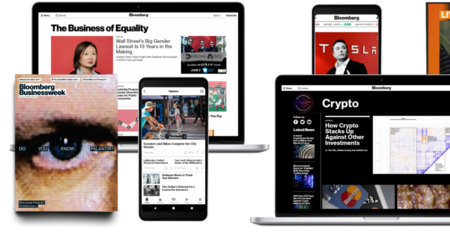(Bloomberg) — Now that seemingly every celebrity, from Dwayne Johnson to Kendall Jenner, have tequila brands, might mezcal be next to rise?
Jim Cramer, host of CNBC’s Mad Money and Squawk on the Street, and his wife Lisa Detwiler, who is a Corcoran real estate broker, will launch Fósforo Mezcal in major U.S. markets on April 29, as well as online via e-commerce platform Speakeasy. The lineup includes a straight joven tobala ($90, 45% alcohol by volume) and a tobala penca ($125, 43% ABV); the latter is a style rarely seen in the U.S. that rests roasted penca (agave leaves) in the distillate for several weeks to add caramel-like flavor and a mellow straw hue.
The product—originally slated for a 2021 release, but pushed back to this year due to pandemic-related supply chain issues—has been in the works for about five years.
“Jim and I have a place in San Miguel Allende, and we used to travel there with some frequency,” explains Detwiler, founder and creative director of Fósforo. Closing out a restaurant visit in the Centro neighborhood, Cramer queried the staff about their drinking plans for the night. “Out of the back, they brought out a plastic milk jug of homemade mezcal,” Detwiler recalls. “We’d had lots of tequila before, but this was just very, very different: smoky, fruity, different sipping stuff we had never had before. Jim in particular just fell in love with it.”
Cramer, a longtime fan of Scotch, saw potential for converting other whisky drinkers to a high-end version of the agave spirit, which can have similarly smoky tones. (Cramer’s role with the brand is largely that of a “taste ambassador,” Detwiler says; “Basically, all the work is mine.”) Even the name of the product involves fire and smoke: In Spanish, fósforo means “matchstick” and “phosphorus,” a key element that causes matches to ignite.
Many consider tobala to be “luxury mezcal.” Indeed, it can be more complex and full-bodied compared to the often leaner feel of the more commodified espadin, the type of agave that accounts for about three-quarters of mezcal production. While espadin takes about six to eight years to reach maturity, wild tobala is a smaller plant and takes 12 to 15 years to mature, says Lou Bank, co-founder and executive director of Sacred, a mezcal advocacy and education initiative. (Farmed tobala can reach maturity faster, he adds.)
Moreover, while most mezcal sold in the U.S. is produced in Oaxaca, Fósforo is made in Puebla, which was designated as a mezcal-producing region only in 2017, making it the ninth and newest state to receive the designation. Relatively few Puebla mezcals have made their way north.
Rollout plans include the launch of Fósforo Foundation, to be overseen by a pair of scientists (Humberto Pinon, Violeta Coronado) who will study the product’s ecological impact and implement projects such as replanting trees used in the roasting of piñas, the heart of the agave plant that’s cooked down in the distillation process. And Detwiler and Cramer are in the process of selling their Brooklyn restaurants, Bar San Miguel and the Longshoreman, to comply with “tied house laws” that prohibit liquor manufacturers from owning a retail business that sells alcoholic beverages.
So how do the mezcals taste?
Fourth-generation distiller Aarón Alva Sánchez , whose signature appears on the bottle, coaxes a tropical fruit funk and nuanced smokiness in the flagship tobala. The penca, aged between one and three months in glass, bears a passing resemblance to oak barrel-aged reposado mezcals yet distinguishes itself with layers of nuttiness and mesquite and a distinct honeyed-vanilla sweetness.
For U.S. consumers, Fósforo may taste more like a novelty than an outright luxury, although Detwiler suggests the penca could prove a “gateway” for the Laphroaig or Ardbeg whisky crowd. The penca is a particularly solid sipper worth seeking out.
Fósforo General Manager Chuck Huggins says they’re experimenting with even older pencas: mezcal has been aging in glass for three years, with an eye toward eventually releasing a limited edition five-year-old penca tobala.
After the serious run-up of high-end tequila, the time may be right for smart money to get into the luxury mezcal market: IWSR Drinks Market Analysis reports that mezcal sales by volume in the U.S. increased 14.5% in 2020 to 360,000 nine-liter cases, at a retail value of almost $185 million. It forecasts a 10.5% compound annual growth rate (CAGR) from 2021 to 2025.
Detwiler insists, though, that she and her team are not joining a trend: “It was about—truly—the love of the product and a desire to do something in this arena. It was not about OK, mezcal is having its time. We’re just lucky in that regard.”
More stories like this are available on bloomberg.com
©2022 Bloomberg L.P.











